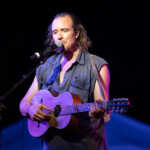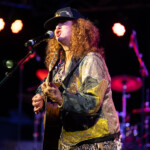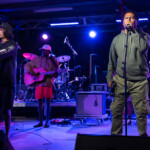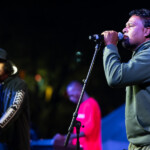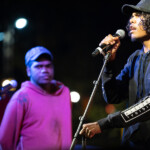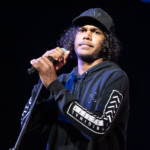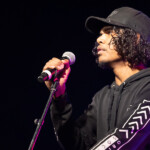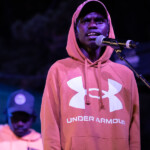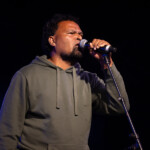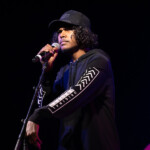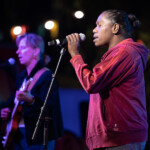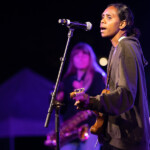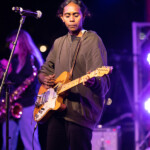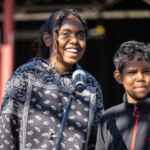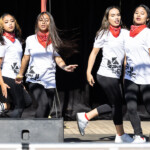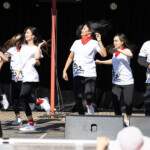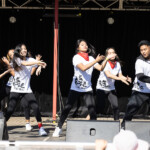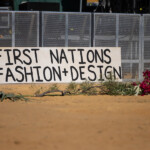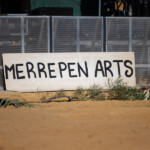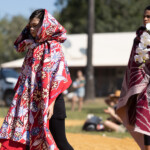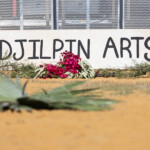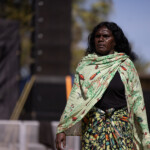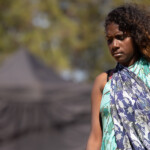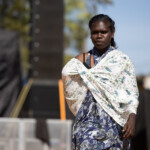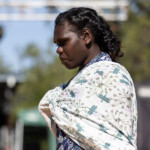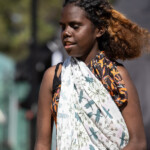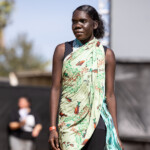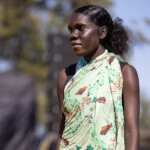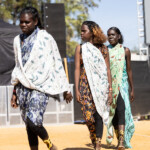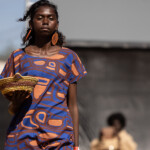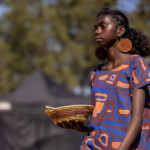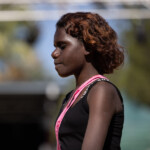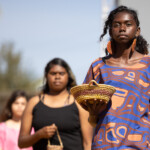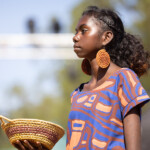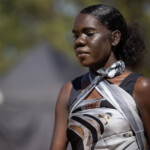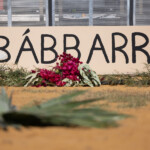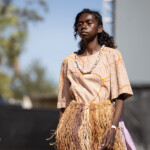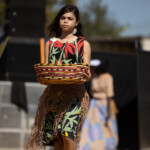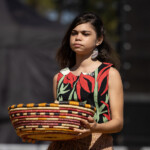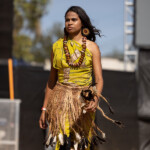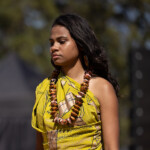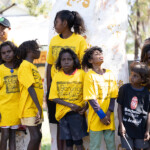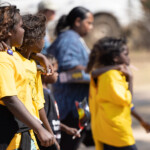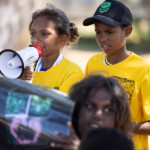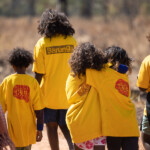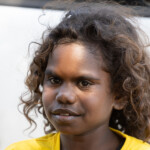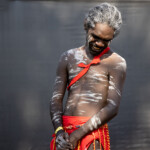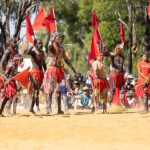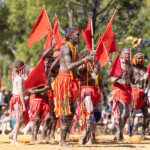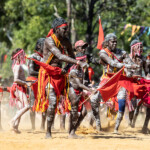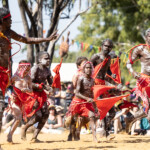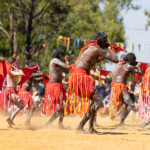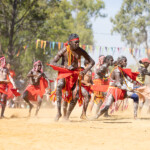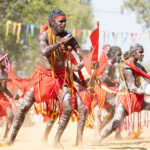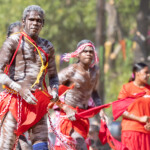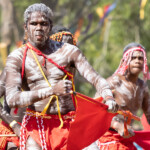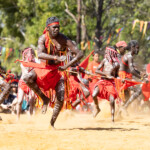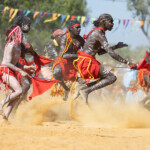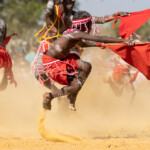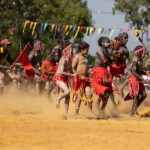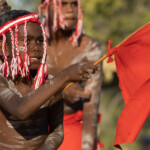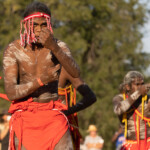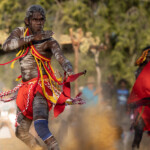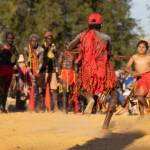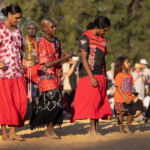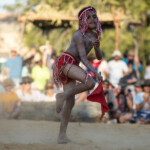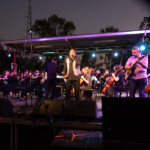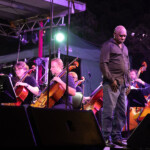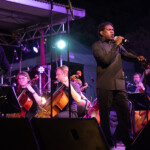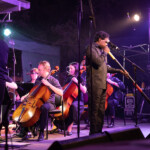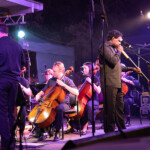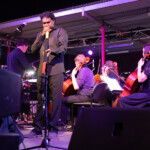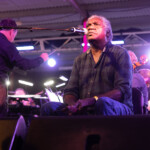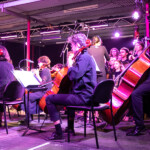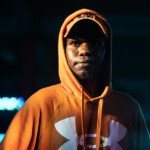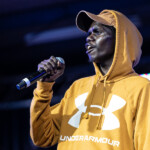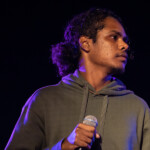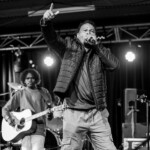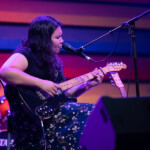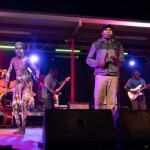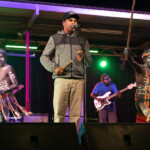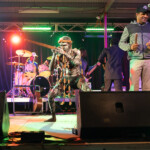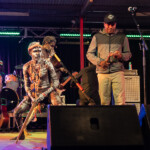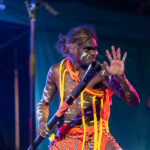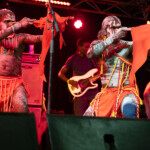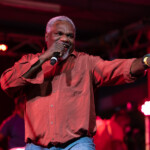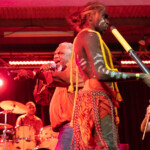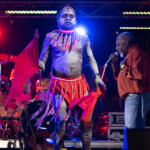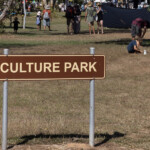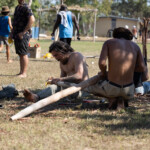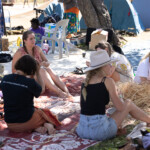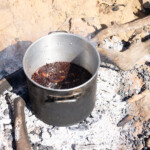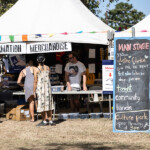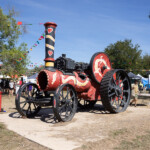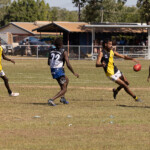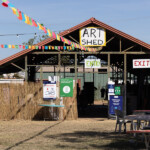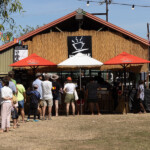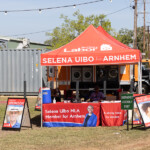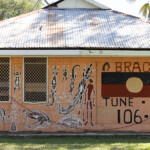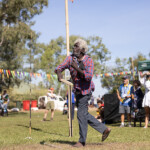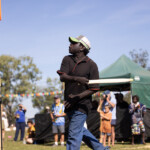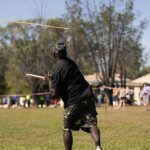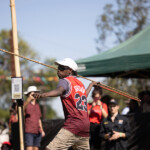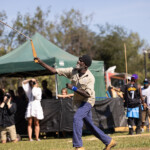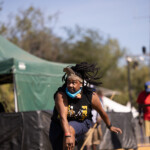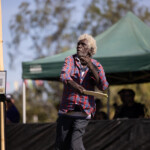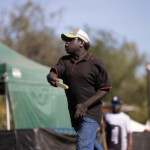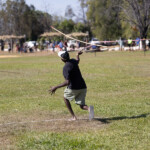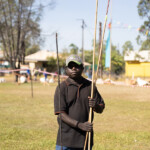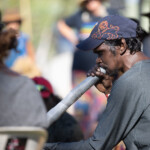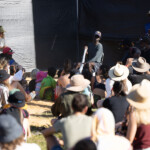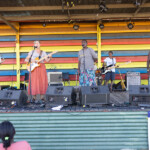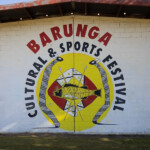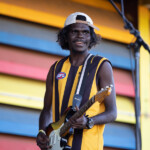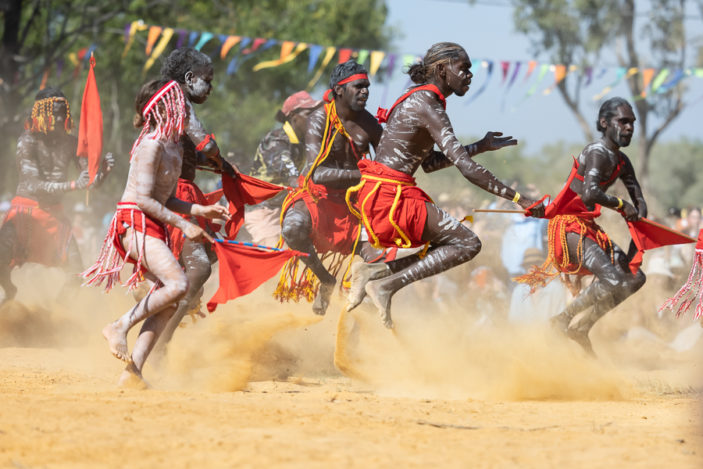
The 2021 edition of the Barunga Festival was run over the June long weekend seemingly against all the odds. For those unfamiliar, Barunga is a small indigenous community approximately eighty km southeast of Katherine in the Northern Territory. It’s about four hours drive from Darwin. The festival weekend is the only time in the year that you can visit Barunga without a permit.
The festival is a celebration of music, sport, traditional arts and cultural activities. The Barunga community swells from a population of approximately four hundred to around three thousand Indigenous and non-indigenous people over the weekend. It’s a smoke-free, alcohol-free and drug-free weekend that will keep you busy trying to see as much as you can before it all winds down on the final night.
It has been on the calendar since 1985. In 1988 Bob Hawke, then the Prime Minister attended and was presented with the Barunga Statement by local elders. This was a call for a treaty, and he publicly supported the request, hoping for it to be ratified by 1990. More than thirty years later, this still has not been achieved. Interestingly perhaps, the opening of the festival each year is attended by a swathe of politicians from both sides of the chamber. Michael McCormack was there in his capacity as acting P.M. this year.
The festival is extremely modestly priced. For less than $60 you get to camp out in a beautiful indigenous community for three nights. Barunga, like most Indigenous communities, is normally out of bounds for the non-indigenous, so it is a rare and treasured opportunity to get a glimpse of our First Nations Australians on their own country.
They are keen to share their languages and culture. Barunga is on the ‘grey nomads’ trail, and I spoke to many that timed their travels around the top end to coincide with this festival. In previous years there has also been a smattering of backpackers who come down from Darwin, but obviously not so many of them this year.
Our First Nations people come to the festival from all over Arnhem land, from central Australia and as far as the Kimberleys. One reason they come is to play sport against the other communities. The basketball and softball competitions are keenly fought out.
The Australian Rules football competition is hotly contested. The skill level is high, they play hard, on a surface which no doubt would dish out some pain, but they seemed fearless. At the end of each game, the two teams would get in a huddle together, to congratulate and commiserate. There was never an argument about an umpires decision, and they speak to each other in their own language. The odd English phrase was heard from time to time. Mostly ‘man up, man up’.
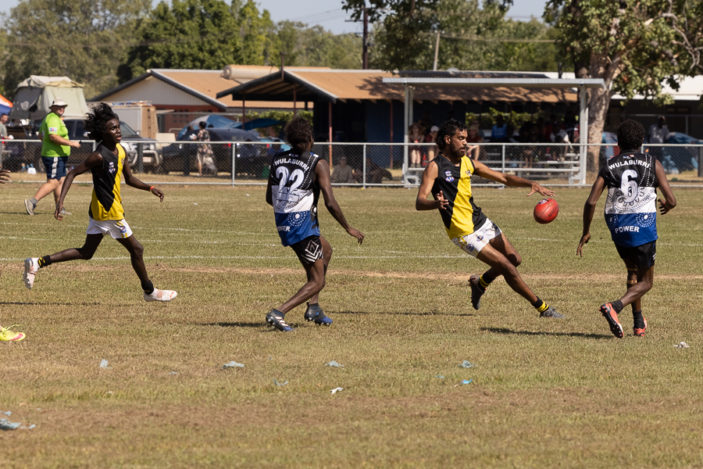
One of the highlights of the weekend is signing up for the tour which is run by the Barunga School kids. The boss of the tour is one of their teachers, Anita Painter, who herself was a student at Barunga back in the day. The tour is a wander through the outskirts of town, highlighting the various plants and explaining what they are used for. The kids take turns talking about the plants, some of which are used for bush medicine, and others which are bush plums and the like.
A number of different clans relocated to Barunga in the middle of the 20th century, After land rights were achieved in the ’70s, many went back to their own country, but there are still many different languages spoken within the community. In Barunga itself there are more than a dozen languages spoken amongst the 400 or so residents. Keeping the languages alive is a challenge. The kids and adults here speak a number of languages, of which English is just one.
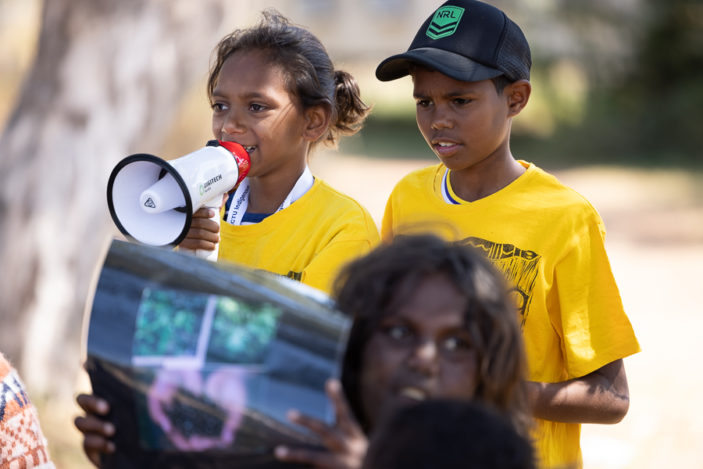
There is a strong cultural element to the weekend. Dancers come from far and wide to showcase their bungal, traditional dances.
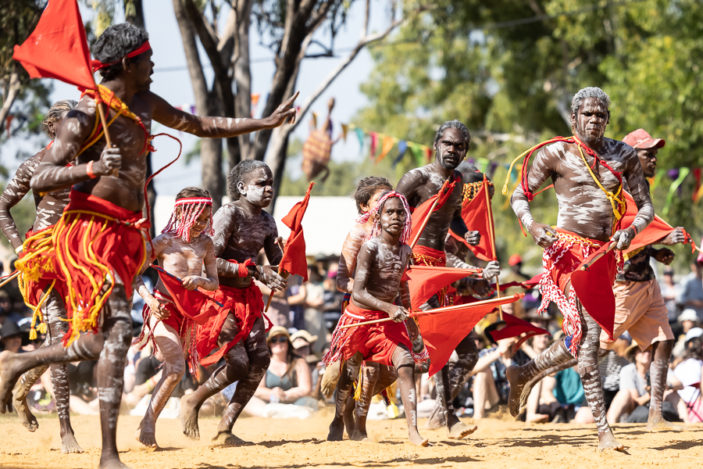
The Banatjarl Strongbala Wumin Group (Women’s Council) give visitors the opportunity to do some weaving, learn about traditional medicines and make damper. By getting involved with these workshops and school tours you get an opportunity to get a little insight into their culture. It’s a rich and rare opportunity for those present.
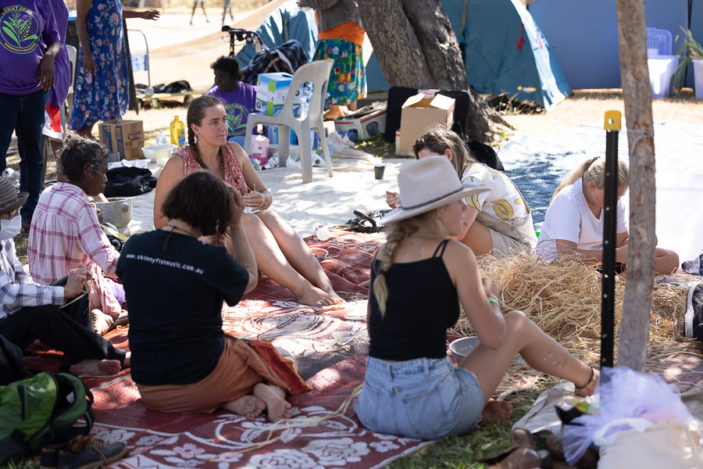
Justine Clark, perhaps best known for her role on Play School, has been an integral part of the festival for many iterations now. She heads up a few days before it starts, to spend time with the school kids learning some new songs to sing on stage.
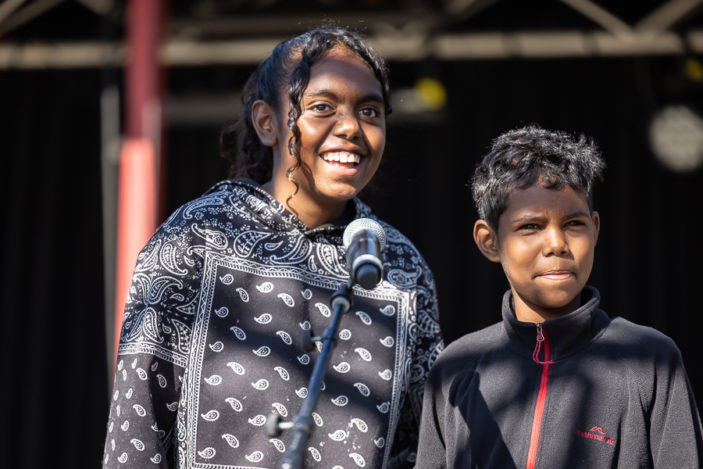
There are art stalls, where you can buy art directly from its creators. You can make your own spear, as well as your own yidaki (didgeridoo).
There is a contest for spear throwing, for which you can sense a great deal of pride from the elder contestants gently simmering below the surface. The winner was Ken – for the fourth time.
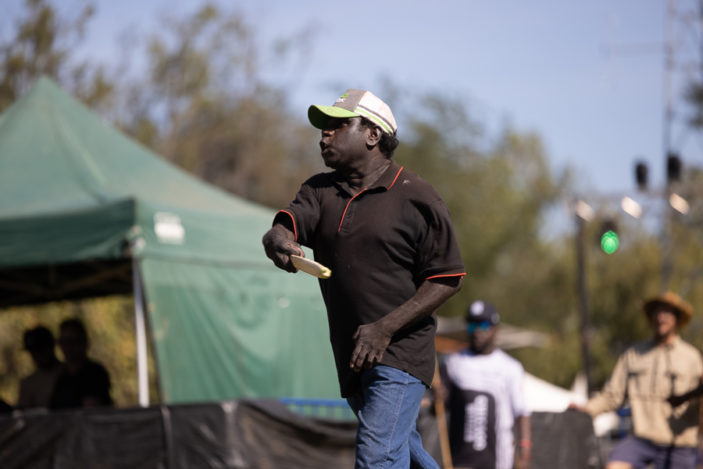
Food stalls offer healthy options, and there was a long queue every day from the coffee stall which had come down from Darwin for the festival. It was a challenge balancing the wait for the coffee (which was great) and trying to catch the next event on the program.
There was a fashion parade for designs from various local designers. This was a first for the festival, and it was great to see the designs and the girls bravely modelling them. They spoke of being nervous as most were doing this for the first time, but they were keen to showcase their designers. Bravo.
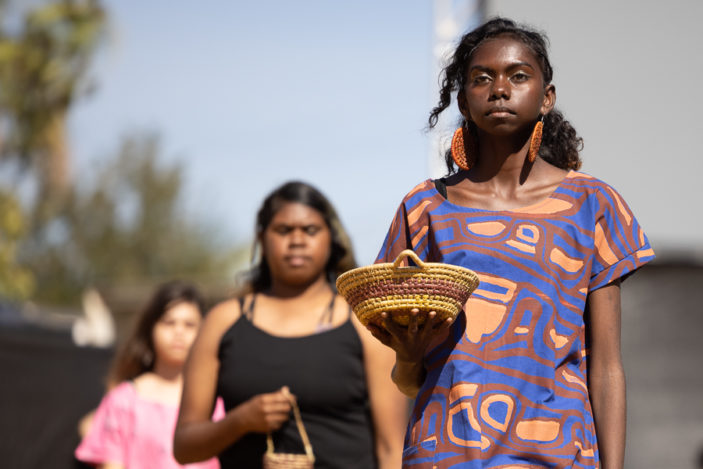
The music is always a highlight at the festival. Curated by Skinnyfish Music, it offers up some incredible moments. Crowd favourites Mambali are regulars. They hadn’t played together in over a year, but you would never know. With powerful vocals, dancers and some yidaki (didgeridoo), they got massive cheers. Another outstanding act was what was billed as the Future Saltwater Band. Led by Saltwater Band original member, Manuel Dhurrkay, it contained some young talented vocalists, also from Elcho Island. This was the birthplace of the late great Dr G. Yunupingu, who was also originally in the Saltwater Band.
One of those special moments was seeing the Darwin Symphony Orchestra playing with a variety of First Nations singers up front. This included vocalists from Mambali, The Ripple Effect and The Djari Project, a youth choir in Indigenous languages.
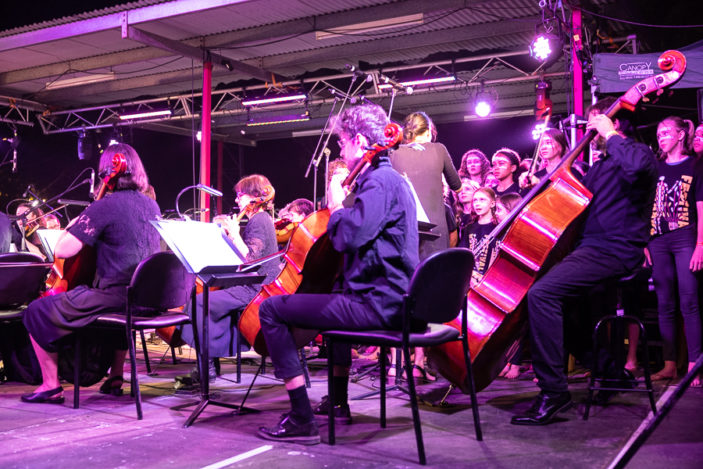
There was a guitar-shredding competition, won by Isaiah Campbell from Elcho Island. The field was a little curtailed, as some of the entrants were busy doing their traditional dances in the cultural park at the time. They are multi-talented.
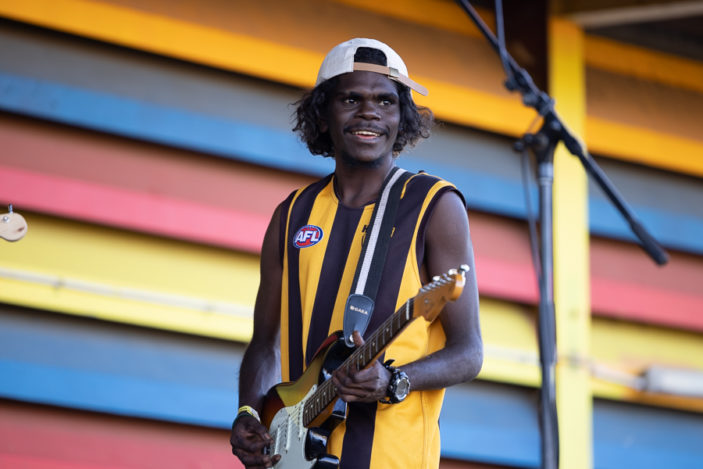
The festival is an interesting mix of activities. There are some put on for the outside visitors, such as the damper workshops and the bush medicine, spear and yidaki making. There are others that are primarily for the local communities. But many of them are equally enjoyed by both. The traditional dancing, whilst a highlight for many of the non-indigenous, and no doubt an ‘insta-moment’ for many, is just as keenly observed by the locals. It’s not put on just for show, by any means.
This is the third Barunga festival I’ve been to. I take it as a privilege to be able to attend and thank the Bagala clan of the Jawoyn people for welcoming everyone that attended. Also, a massive shout out to Skinnyfish Music for all they do in organising this festival. It was touch and go as to whether it would go ahead this year, due to the pandemic, and some communities chose to stay away, so it was a significant challenge for them to put it together.
Check out the rest of the photos from the weekend below. All photos by Bruce Baker.

